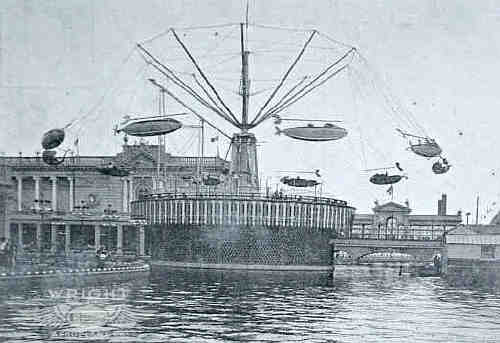John WRIGHT [10087]
- Born: 1864, Balderstone, Lancashire, England 8453,8454
- Died: 1937, Southport, Lancashire, England at age 73

 General Notes: General Notes:
Some family trees have John Wright marrying Catherine Meadows, however, in the Parish Registers, the father of this John is actually a William Wright, so I doubt this is the correct marriage. If this is not the correct John, the below newspaper and other stories do not belong to this John Wright and therefore the death will also be incorrect.
Lancashire Evening Post January 12, 1937
SOUTHPORT STEAMER CAPTAIN DEAD
John Wright, Marshside Road, Southport, who was ex-chairman of the Southport Boating Company and member of the old Southport Lifeboat crew, died at his home, aged 75, today. He had also been pleasure steamer captain and manager of Sir Hiram Maxim's captive flying boats on Southport Pleasureland.
http://www.wright-brothers.org/History_Wing/History_of_the_Airplane/Doers_and_Dreamers/Doers_and_Dreamers_M.htm
Sir Hiram Maxim, in 1878, lost a priority patent battle with Thomas Edison over the invention of the electric light. He next invented the machine gun, found the US Department of War unreceptive, and moved to England in 1881 where the Royal Army was more convivial. In England he devoted much of his life to research in aviation but made little substantial contribution. In his first public address on aeronautics, Wilbur Wright credited Maxim for making the first powered flight, although it was uncontrolled and could not be sustained. Maxim was convinced that propulsion was the central problem in aviation and built a lightweight steam engine that developed 180-horsepower. He mounted two of these on a huge multi-wing airplane and tested it on a track. The track was designed to hold the biplane down, letting it rise only a few inches. But during one test in 1894, the track failed to restrain the biplane and it took off with three people aboard, careened through the air for several hundred feet, and then crashed and was demolished. Thankfully none aboard were serious injured. This was, as Wilbur pointed out, perhaps the first time an airplane took off from level ground under its own power. However, owing the lack of effective controls and a skilled pilot to man them, it could hardly be considered a flight. Nonetheless, he had many other successful inventions, among them the mousetrap and the bronchial inhaler. In 1901 Queen Victoria knighted him for his contributions to science and technology.
In 1904, he designed an amusement ride to help fund his research. Based on one of his aeronautical test rigs, he called it the Captive Flying Machine. Today it is better known as the Circle Swing and it's a staple at every carnival and amusement park. Maxim built a huge (but unsuccessful) biplane in 1910 and in 1911 he partnered with the pilots Claude Grahame-White and Louis Bleriot to develop an airplane capable of lifting a 500-pound (227 kilogram) payload that could be used as a bomber. Ill health prevented him from completing this project and he died in 1916.

 Noted events in his life were: Noted events in his life were:
1. Residence: 99 Shellfield Road, 1911, Southport, Lancashire, England. 8455 Occupation, Manager Captain Flying Machine, Maxim Flying Machines. Also wife Catherine.
|

 General Notes:
General Notes: